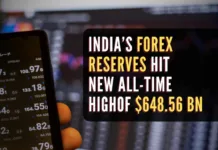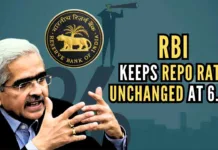
PerformanceGurus Staff
Summary:
- India’s equity markets are in a free fall despite good data
- Triggered by the less than expected Repo rate cut, markets have shed all their gains for this year and then some
- Poor monsoon forecasts and miserable 1st quarter results are also contributing to this
- Flight of hot money, allegedly to China, whose stock market is on a tear, is aggravating the situation
The fall of key indices below eight month low level on June 11 and its failure to stage any smart recovery on the following day has left the investors panicky and policy makers concerned. Both global and domestic fund managers are betting high on the long term growth prospect of India, but the breach of the the psychological support level of 8,000 has unnerved the market participants. . The last time the market saw below-8000 level levels was in October 2014.
On June 12, the benchmark S&P BSE Sensex recovered by 54 points to end at 26,425.30 on short-covering by operators. The Nifty settled at 7984. The woes of the market were also compounded by the fall in the relatively strong IT sector where most of the stocks declined following reports that the US Department of Labor has opened probe against two Indian companies, Tata Consultancy Services (TCS) and Infosys, for H1-B visa violations. Tata Consultancy Service (TCS) shed 2.29%, Wipro was setback by 1.87% and Infosys lost 1.26%.
The real drama unfolded on June 11 when amidst continuing sell off across various sectors, the Nifty lost nearly 2% (165 points) and ended the day at 7965 points. The Sensex crashed 470 points and settled at 26270.
The fall in the market has been vicious, triggered by poor monsoon forecasts, miserable March quarter results, despairing commentaries posted by managements of companies, falling demand, non-revival of Capital Expenditure (capex) cycle, flight of hot money, and the absence of any immediate trigger.
The fall below the 8000 level on the Nifty is worrisome on several counts. First, it was against global cues; second, it came a day after the latest data showed a sharp fall in current account deficit at USD 1.3 billion or 0.2% of GDP in the fourth quarter of 2014-15; third, on June 10 the Finance ministry said the indirect tax collection has gone up by 39.2% this fiscal and excise collection almost doubled.
Indirect tax collections during the first two months (April-May) of the current financial year increased to Rs 96,128 crores ($15.038 billion), from Rs 69,069 crores ($10.81 billion) during the same period in 2014-15, a 39.2% increase, a finance ministry statement said.
The precipitous post-budget decline in the market during the last ten-weeks has seen the Nifty shedding almost 1100 points from the peak of 9100. The downward trend started soon after the budget and has persisted with sporadic rises, driven mostly by short covering.
The rise in the market was driven by emergence of India as sweet spot for development on basis of its domestic demand, falling commodity prices, and euphoria generated by change of the government at the center in May last year. A year later, data across various segments are showing that demand is not picking up, commodity prices are surging again, and the euphoria has been replaced by concern.
The crash in the market has majority affected Public sector banks and infrastructure companies, which share a symbiotic relationship. Most of the infrastructure companies have high debts and are finding it difficult to raise more funds to execute their orders. This is creating a vicious cycle. Companies are not getting loans to execute projects, and in turn they are not able to generate profits to pay back their outstanding debts. The net result is a rise in the non-performing assets of the bank. Not surprisingly, the shares of Public Sector Banks have seen a free fall during the last two months.
Faced with this grim situation, On June 11 RBI Deputy Governor S S Mundra wrote to the Finance Ministry for providing additional money for re-capitalization of (Public Sector Undertakings) PSU banks. Pointing out that the budgeted capital for PSU banks is not enough, he said additional capital was required for cleaning of books and supporting future growth.
In the backdrop of the RBI official’s letter, Finance Minister Arun Jaitley on June 12th held a meeting with the heads of PSU banks and reviewed their performance, the NPA situation and asked them to pass on RBI’s rate cut benefits to borrowers for propping up growth. Reserve Bank has cut repo rate by 0.75% since January but not all banks have passed on the lower interest rates to customers. Gross NPAs of PSU banks stand at Rs 2,60,531 crores ($40.76 billion) as on December 2014, as per the RBI data.
IMPACTED stocks:
- Among the top losers on June 11 were Tata Power (4.88%), Tata Motors (3.61%), BHEL (3.24%), RIL (3.17%), Axis Bank (3.10%), Cipla (3.07%), Wipro (2.80%), M&M (2.63%), SBI (2.38%), Tata Steel (2.34%), NTPC (2.32%) and HDFC (2.02%).
- Among the BSE sectoral indices, Auto fell by 2.37% followed by Bankex (2.37%), Power (2.31%), Consumer Durables (2.03%), Realty (1.96%), Consumer Goods (1.80%), IT (1.47%), Oil&Gas (1.42%) and Tech (1.30 pc).
- Small-cap and mid-cap indcies also dropped by 1.55% and 1.78%, respectively.
Note:
For this article, the exchange rate used is 1 US Dollar = 63.92 rupees
- Elon Musk postpones India visit. Non-clarity in Tesla partner and Starlink license might be the reasons - April 20, 2024
- NIA confiscates Pak-harboured Khalistani terrorist Lakhbir Singh Rode’s key aide’s land in Moga - April 19, 2024
- Prime Minister Narendra Modi: A Gujju businessman who does not invest his precious time for a losing battle - April 13, 2024










